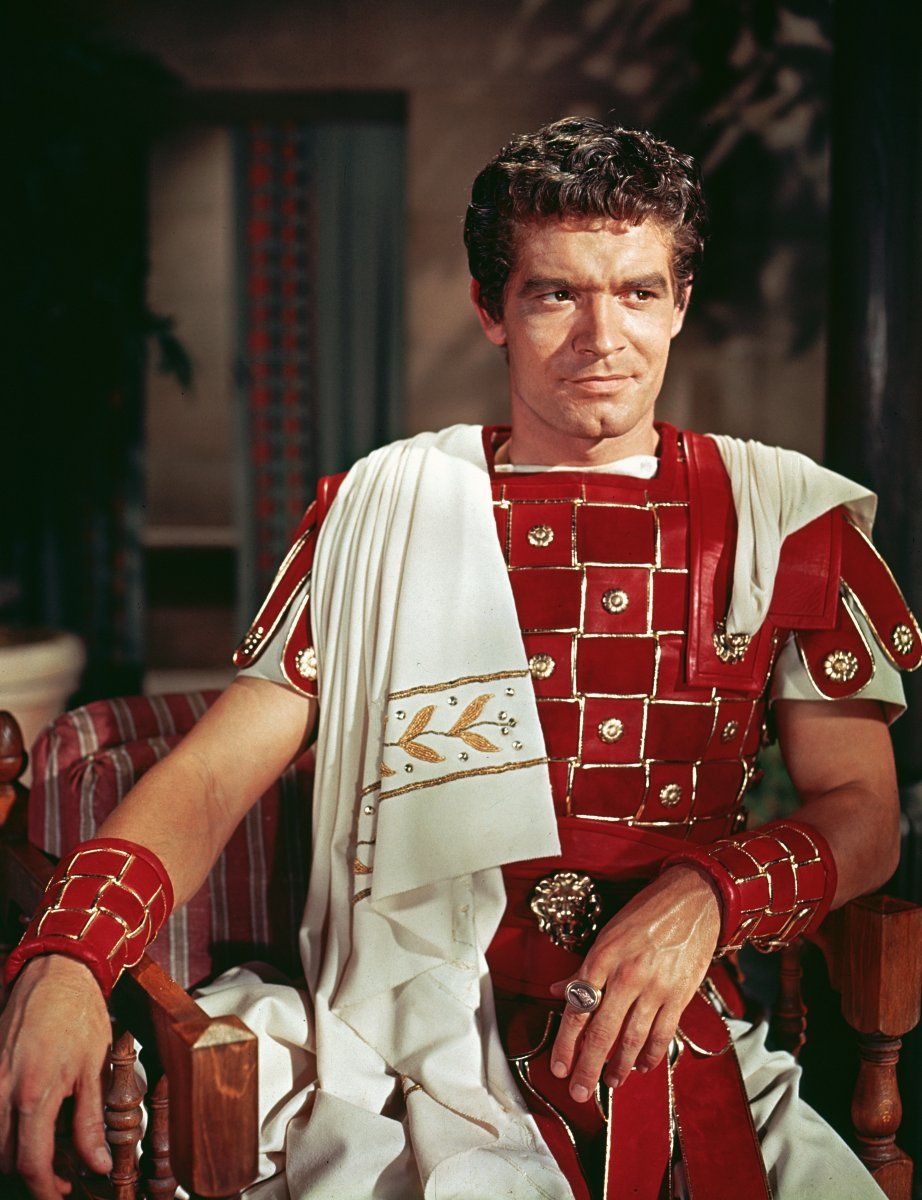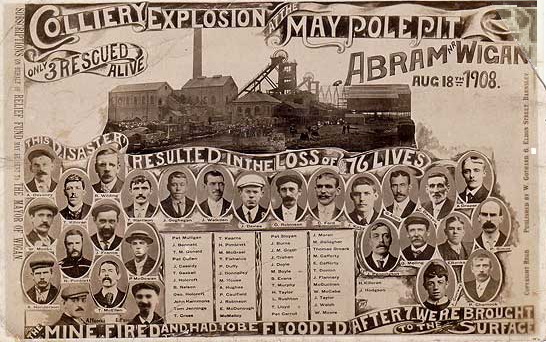ON THIS DAY
Published in Issue 4 (July/August 2020), News, Volume 28BY AODHÁN CREALEY
JULY
04/1931

Above: Willie Miller/Stephen Boyd as the villainous Messala in Ben-Hur (1959).
Willie Millar, actor, born in Glengormley in north Belfast, one of nine children of a poor Presbyterian family. Back in 1959 the must-see movie was the William Wyler-directed adaptation of the Lew Wallace bestseller Ben-Hur (1880), or Ben-Hur: A Tale of the Christ, to give it its full title, a 212-minute—that’s 3 hours and 32 minutes—epic about betrayal and redemption set in Roman times. Lauded with a record eleven Oscars, it enhanced the status of Charlton Heston—better known years later as president of and spokesman for the National Rifleman’s Association (1998–2003)—who won an Oscar for best actor in the leading role, and made Willie Millar, who played the handsome but villainous Messala, an international star. Millar, of course, went by the stage-name Stephen Boyd and had arrived in Hollywood just a year earlier after tours of Canada and the United States as a stage actor and appearances in a number of minor British movies. After Ben-Hur he starred in a series of other ‘sword and sandal’ movies, including the dreadful The Fall of the Roman Empire (1964), but never again made movie headlines. He died in June 1977 from a heart attack at the age of 45.
01/1970
‘For God’s sake, bring me a large Scotch’—Reginald Maudling, British Home Secretary, on his flight back to London after his first visit to Northern Ireland.
02/1980
General Tom Barry (83), leader of the West Cork flying column responsible for the ambushes at Kilmichael (Nov. ’20) and Crossbarry (March ’21), and author notably of Guerrilla days in Ireland (1949), died.
03–05/1970
During a 34-hour illegal curfew on the Lower Falls Road, Belfast, during which over 100 weapons were found, clashes between Official and Provisional IRA gunmen and the British army led to five deaths, including that of a press photographer. Sixty others, including over a dozen soldiers, were injured.
03/1970
Arlene Foster, leader of the DUP since 2015 and First Minister of Northern Ireland since January of this year, born in Enniskillen, Co. Fermanagh.
06/1970
Dr Patrick Hillery, Minister for External Affairs, visited the Falls Road, Belfast. The visit was criticised by the British Foreign Secretary, Sir Alec Douglas-Home, as ‘an error of judgment and a serious diplomatic discourtesy’.
07/1980
Detective Garda John Morley (37) and Garda Henry Byrne (29) were killed in a shoot-out with three raiders who had stolen £35,000 from a bank in Ballaghadereen, Co. Roscommon.
12/1970
Over 1,000 refugees from Northern Ireland arrived in the Republic during the preceding 48 hours.
19/1920
Nineteen were killed and over 50 wounded in four days of continuous sectarian violence in Derry.
21/1920
‘Protestant and unionist’ workers at Workman and Clarke’s shipyard in Belfast, incited by unionist politicians, resolved to drive out ‘disloyal workers’—Sinn Féiners and socialists. In three days of violence seven Catholics and six Protestants were killed.
27/1920
Recruitment began, mainly from among demobilised British Army officers, into a new force—the ‘Auxiliary Division’—to augment the RIC.
AUGUST
18/1908

Above: A poster commemorating the 1908 Maypole colliery disaster. (Hennigan Heritage Museum, Swinford)
In one of Britain’s worst mining disasters, a gas explosion ripped through the Maypole colliery in Wigan, Lancs., starting a fierce fire that led to further explosions. Though 76 miners lost their lives, it could have been substantially worse: over 500 miners from the day shift had finished work a short while earlier. The victims had just started the evening shift, making their way to the coalface on a tortuous mile-long journey underground through 4ft-high shafts. Such disasters were common at the time. Over the previous fifteen years there had been at least eight in England and Wales, causing multiple deaths. And, as was the case with Maypole, most of those occurred after what were known as ‘colliery warnings’, weather alerts published in newspapers when there was high air pressure, warning miners to beware of escaping firedamp, a combustible gas given off by coal, and to keep dust moistened in the vicinity of blasting operations. Rescue efforts at the Maypole were largely futile and few bodies were recovered, but miraculously there were three survivors. A burial service was later conducted on the pit brow before the shaft was sealed for all time. There were many Irish amongst the dead, including thirteen from County Mayo, such as Thomas Groarke from Charlestown and Anthony McDonagh from Kiltimagh. And one of the survivors was Mayo man Edward Farrell. Twelve years ago, to mark the centenary, a number of events and ceremonies were held in that county, attended by the mayor of Wigan and the chairman of Mayo County Council. A room at the Hennigan Heritage Museum in Swinford was dedicated to the disaster.
01/1960
Micheál Martin, TD for Cork South-Central since 1989, leader of Fianna Fáil since 2011, and now Taoiseach born in Turner’s Cross, Cork.
01/1980
Seventeen people were killed when the Dublin–Cork train left the rails and jackknifed at Buttevant Station, Co. Cork.
02/1820
John Tyndall, physicist, mountaineer and promoter of science in the Victorian era, born in Leighlinbridge, Co. Carlow.
08/1980
Five adults and five children died in a fire at the Central Hotel, Bundoran, Co. Donegal.
09/1920
The Restoration of Order in Ireland Act extended the terms of the Defence of the Realm Act (1914) to allow the authorities to impose curfews, restrict movement of traffic, establish military courts of inquiry to replace coroners’ inquests, and provide for trial of civilians by court martial and imprisonment of Sinn Féiners on suspicion.
12/1970
Constables Samuel Donaldson (23) and Robert Millar (26) were killed by an IRA booby-trap bomb hidden in a stolen car parked a mile from Crossmaglen, Co. Armagh. They were the first two members of the RUC to be killed by the IRA in the Troubles.
21/1970
The Social Democratic and Labour Party (SDLP) was founded by a coalition of political figures who had been prominent in the civil rights struggle of the late 1960s. The first leader was the West Belfast MP Gerry Fitt.
22/1920
RIC District Inspector Oswald Swanzy, cited by a Cork jury as being implicated in the murder of Lord Mayor Tomás MacCurtain earlier that year, was assassinated in Lisburn by a four-man IRA unit from Cork.
23/1170
Richard fitzGilbert de Clare, lord of Strigoil, better known as ‘Strongbow’, landed in Waterford with a force of c. 1,200, including 200 knights.
24/1920
Further sectarian violence in Belfast. By the end of the month c. 400 Catholic families had been driven from their homes and 22 people had lost their lives.
















